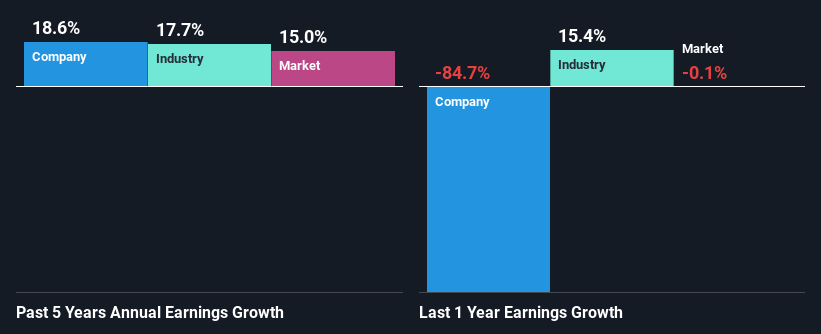Can Rectifier Technologies Limited (ASX:RFT) Rely On Its Fundamentals For Future Uptrend In Price?
It is easy to overlook Rectifier Technologies' (ASX:RFT) given its unimpressive and roughly flat price performance over the past three months. However, the company's key financials probably have more to say so you may want to give the company a closer look given that stock prices usually follow the long-term financial performance of a business. Specifically, we decided to study Rectifier Technologies' ROE in this article.
ROE or return on equity is a useful tool to assess how effectively a company can generate returns on the investment it received from its shareholders. Simply put, it is used to assess the profitability of a company in relation to its equity capital.
See our latest analysis for Rectifier Technologies
How To Calculate Return On Equity?
Return on equity can be calculated by using the formula:
Return on Equity = Net Profit (from continuing operations) ÷ Shareholders' Equity
So, based on the above formula, the ROE for Rectifier Technologies is:
4.1% = AU$589k ÷ AU$14m (Based on the trailing twelve months to December 2023).
The 'return' is the income the business earned over the last year. So, this means that for every A$1 of its shareholder's investments, the company generates a profit of A$0.04.
Why Is ROE Important For Earnings Growth?
We have already established that ROE serves as an efficient profit-generating gauge for a company's future earnings. Based on how much of its profits the company chooses to reinvest or "retain", we are then able to evaluate a company's future ability to generate profits. Assuming everything else remains unchanged, the higher the ROE and profit retention, the higher the growth rate of a company compared to companies that don't necessarily bear these characteristics.
A Side By Side comparison of Rectifier Technologies' Earnings Growth And 4.1% ROE
As you can see, Rectifier Technologies' ROE looks pretty weak. Even compared to the average industry ROE of 9.1%, the company's ROE is quite dismal. Rectifier Technologies was still able to see a decent net income growth of 19% over the past five years. Therefore, the growth in earnings could probably have been caused by other variables. Such as - high earnings retention or an efficient management in place.
We then performed a comparison between Rectifier Technologies' net income growth with the industry, which revealed that the company's growth is similar to the average industry growth of 18% in the same 5-year period.
Earnings growth is a huge factor in stock valuation. What investors need to determine next is if the expected earnings growth, or the lack of it, is already built into the share price. This then helps them determine if the stock is placed for a bright or bleak future. If you're wondering about Rectifier Technologies''s valuation, check out this gauge of its price-to-earnings ratio, as compared to its industry.
Is Rectifier Technologies Efficiently Re-investing Its Profits?
While the company did pay out a portion of its dividend in the past, it currently doesn't pay a dividend. We infer that the company has been reinvesting all of its profits to grow its business.
Summary
In total, it does look like Rectifier Technologies has some positive aspects to its business. Even in spite of the low rate of return, the company has posted impressive earnings growth as a result of reinvesting heavily into its business. Until now, we have only just grazed the surface of the company's past performance by looking at the company's fundamentals. You can do your own research on Rectifier Technologies and see how it has performed in the past by looking at this FREE detailed graph of past earnings, revenue and cash flows.
Have feedback on this article? Concerned about the content? Get in touch with us directly. Alternatively, email editorial-team (at) simplywallst.com.
This article by Simply Wall St is general in nature. We provide commentary based on historical data and analyst forecasts only using an unbiased methodology and our articles are not intended to be financial advice. It does not constitute a recommendation to buy or sell any stock, and does not take account of your objectives, or your financial situation. We aim to bring you long-term focused analysis driven by fundamental data. Note that our analysis may not factor in the latest price-sensitive company announcements or qualitative material. Simply Wall St has no position in any stocks mentioned.

